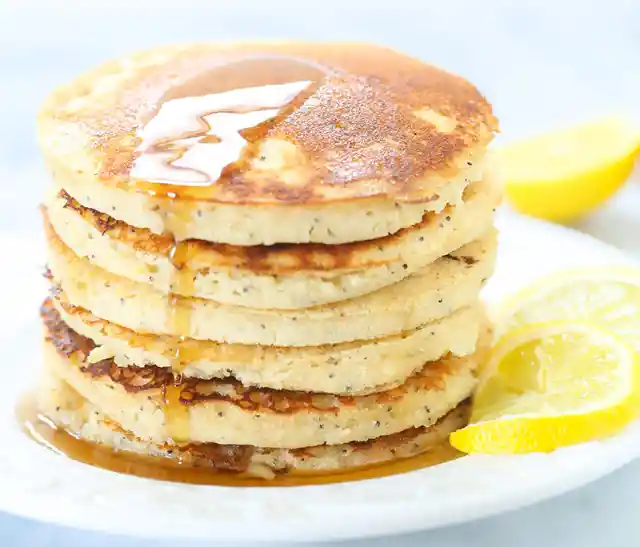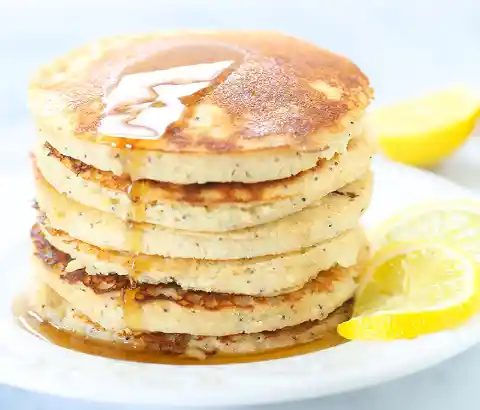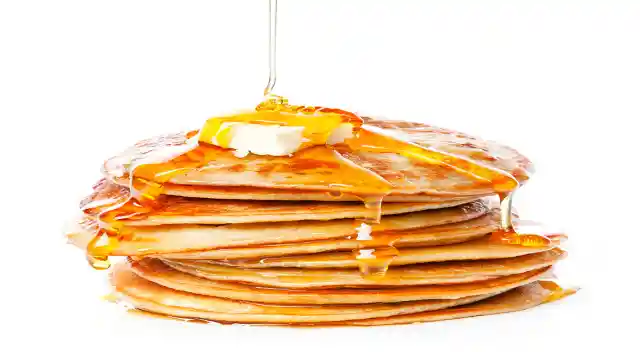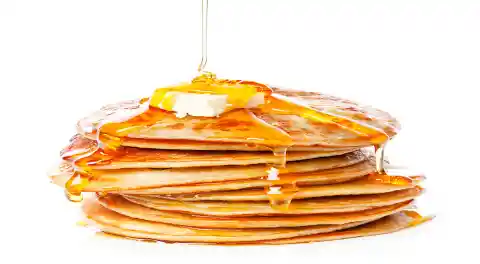

Milk is a staple in our house, in fact, I insist on my kids consuming as much milk as possible. I am sure you all know how important milk is for the bones, especially for fast growing and developing kids. That is why I try to include it in every dish I can. Say, pancakes. I figured that if I ditched refined flour and sugar from pancake recipes, they would be the perfect sweet treat comprised of healthy ingredients only. Here is what I use to produce a healthy pancake recipe:
To take the pancakes one step further I use nut butter, olive oil or coconut oil as healthier alternatives to regular vegetable oil.
Turns out, the milk we consume on a daily basis is not beneficial at all! The process of pasteurization and homogenization destroys almost all nutrients in milk, making it an acidic food. And this counts for all types of milk – whole, 2%, 1%, or skim. Here is a fact: “countries with the highest dairy consumption (most modernized, Western cultures) coincidentally have the highest rate of osteoporosis.” We’ve been doing it all wrong people!
What Type of Milk to Use in Pancakes?
The answer is raw milk. Raw milk is the milk that comes from grass-fed cows, goats, or sheep, is unpasteurized and unhomogenized. This milk keeps all its natural fatty acids, enzymes, vitamins and minerals. Calcium, magnesium, potassium, and vitamin D, the nutrients important for healthy teeth and bones, stay intact. Other health benefits of raw milk include, but are not limited to:
What’s more, raw milk doesn’t contain added sugar or synthetic ingredients, like thickeners or shelf-stabilizers, which can be very harmful. You can find raw milk in whole foods market, local farmers markets, or online.


How to Use Raw Milk in Pancakes
Just replace the amount of pasteurized milk indicated in the pancake recipe with raw milk.
Got any sour milk? Don’t throw it away. Use a cup of it in your pancake recipe, it will make them extra fluffy! You can even make your own sour milk by combining raw milk with vinegar in a bowl and set aside for 5 minutes.
The best whey protein comes from raw milk! It is great for those who exercise and want to burn fat and build muscle mass. Here are the ingredients to make extra healthy, protein-packed pancake recipes in no time: one scoop whey protein, 3 egg whites, 1/2 cup oatmeal, 1/2 banana, 2 tsp baking powder.
I found these pancake recipes in the Best American Pancakes – Quick, Easy and Delicious Recipes collection on MyGreatRecipes.
Cultured Dairy Products in Pancakes
Probiotic stimulates the growth of good bacteria, found in small amounts in raw milk, but when you ferment raw milk to make kefir, yogurt or cheese, the good bacteria content increases significantly. These are called cultured dairy products.
To make fluffy kefir pancakes, warm up two cups of kefir and pour into the liquid ingredients mixture. You can also prepare homemade kefir with only a tablespoon kefir and 1 quart of raw milk.
Like sour milk and kefir, yogurt also contributes softness and fluffiness to pancake recipes. Add ¾ or ½ cup of raw yogurt to the batter.
And last, but not least, my favorite type of pancake recipes – the ones with raw cheese. These beauties are not just healthy, but they are also tasty, creamy, and dreamy! Add a cup of raw cottage cheese (or any other soft type of cheese). I like combining cheese with lemon and poppy seeds. Enjoy!